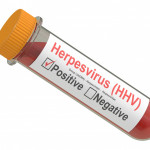HIV-positive women have a heightened risk of genital ulcer disease flare-ups in the first month after starting antiretroviral (ARV) treatment, according to a study published online September 23 in the Journal of Acquired Immune Deficiency Syndromes.
When HIV-positive people with suppressed immune systems start potent ARV therapy, they might experience symptoms of diseases that have been silent, or latent, sometimes for years. This is called immune reconstitution inflammatory syndrome, or IRIS, and the symptoms that can crop up are actually caused by the rekindled immune system overreacting to the presence of infectious organisms rather than the underlying disease itself. There have been reports that this can occur with infectious diseases that cause genital ulcers, such as herpes simplex virus, but the exact timing of the sometimes painful flare-ups hasn’t been well documented.
To determine the frequency and timing of genital ulcer disease flare-ups in HIV-positive women, Susan Graham, MD, MPH, from the University of Washington in Seattle, and her colleagues conducted monthly interviews and exams in 134 Kenyan women starting ARV therapy for the first time.
Roughly 10 percent of the women had genital ulcer symptoms before they started treatment. This increased to 17 percent in the month following treatment initiation, and then dropped back down to 6 percent after the sixth month. Women with CD4 counts below 100 before starting treatment were most likely to have a genital ulcer flare-up. The authors conclude that providers should look out for and warn patients about genital ulcer disease flare-ups in the first month following treatment initiation.
Advertisement
Advertisement
Advertisement






Comments
Comments